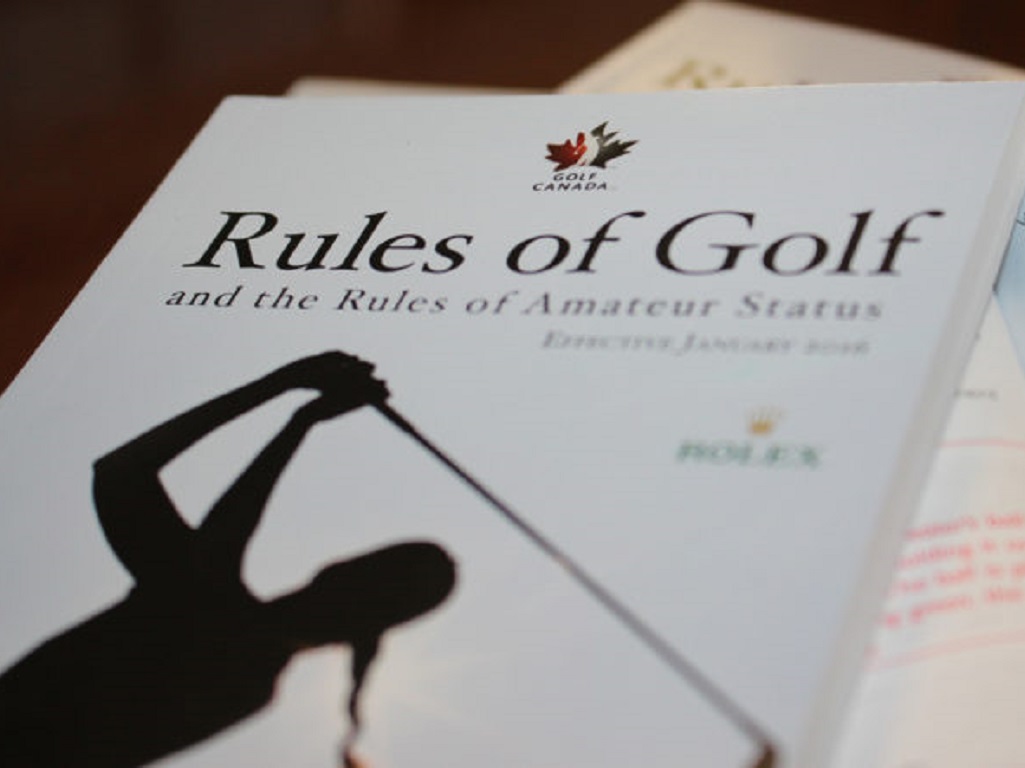Frosty Greens: How Cold is Too Cold for Golf?
Golf can be played in temperatures as low as 40°f, but when the temperature drops below freezing point (32°f), playing golf becomes too cold. Golf is a game that requires both concentration and skill, and the chilly weather can test one’s abilities.
The cold can affect the golf ball, making it harder to get the distance and accuracy required. Moreover, the cold can cause discomfort to the players and affect their swings. Despite this, many golf enthusiasts still prefer to play in colder temperatures and even use heated golf carts or wear layers of clothing to stay warm.
However, players should be cautious as too cold temperatures can potentially cause frostbite or hypothermia. It’s essential to consider the weather conditions and dress appropriately before venturing out to play golf in cold weather.

Credit: www.theguardian.com
Impact Of Cold Weather On Golf Greens
Golf is one of the most challenging sports out there, and players are always pushing themselves to perform better. However, cold weather is often a factor that can hinder one’s game. While many golf courses allow play throughout the year, there is a point where the cold becomes too much.
In this blog, we’ll be looking at the impact of cold weather on golf greens, including the effects of frozen and thawed soil, and frost on greens and turf. Lastly, we’ll be discussing how cold weather affects the fit and feel of the ball on greens.
Impact Of Frozen And Thawed Soil On Grass
Frozen and thawed soil can cause irreversible damage to the golf course green. Some of the effects include:
- Soil compaction because of soil expansion: This leads to slow drainage, and waterlogging, which creates a slippery surface that’s challenging to play on.
- Restricted oxygen flow in soil: This can cause root death and dwindling of the grass.
Effects Of Frost On Greens And Turf
Playing on frost-covered greens can cause serious damage to the golf course. The impact of frost includes:
- Breaking of grass blades: When the grass blades thaw after being exposed to frost, they become brittle and break, killing the blades and slowing down the growth of new grass.
- Increased susceptibility to disease: Frost-damaged grass becomes more vulnerable to disease, which can kill it faster and further hinder growth.
Discussion Of How Cold Weather Affects The Fit And Feel Of The Ball On Greens
When it comes to the fit and feel of the ball on greens, the extent of the impact of cold weather depends on the temperature. Here are some of the key changes that happen:
- Below-freezing temperatures: Golf balls become harder when exposed to below-freezing temperatures, making it difficult for players to compress the ball, and consequently compromising control over the shot.
- Warmer temperatures: As temperatures rise, the ball becomes softer, which can also impact control over a shot.
It should be clear that cold weather does indeed have a tremendous impact on golf greens that can be detrimental to the players’ performance. The golf course management team should be prepared for any anticipated cold weather by taking precautions to prevent damage to the greens, including proper aeration, fertilization, and drainage systems.
Players, on the other hand, should be aware of the potential impact on their games and take appropriate steps to adjust their play accordingly.
Factors That Determine How Cold Is Too Cold For Golf
Cold weather can make the golf course less enjoyable, but how cold is too cold for golfers to play? Factors such as the type of turf, temperature, duration of the cold spell, and time of day can all impact whether it’s comfortable to hit the greens or not.
Let’s dive into the crucial factors that determine how cold is too cold for golf.
Ideal Temperature For Keeping Golf Course Conditions In Good Shape
Maintaining a specific temperature is crucial for keeping the golf course grounds in good shape. Below are a few points to consider:
- The ideal temperature for turf health is between 60 to 75 degrees Fahrenheit.
- Cold and frosty weather can damage the grass root, making it difficult for the course to recover and maintain its shape as it grows.
- Avoid playing if the ground is frozen or if the temperature is less than 40 degrees Fahrenheit.
How Does The Type Of Turf Affect Tolerance To Cold?
Different types of turf have diverse levels of cold tolerance. Below are a few points to keep in mind:
- Warm-season grasses are less tolerant of cold weather, and their color and appearance can be affected in low temperatures.
- Cool-season grasses have higher cold tolerance levels and can survive frosty weather.
- Even though cold-season grasses are more tolerant of low temperatures, long-term exposure can still impact the game’s quality.
Other Variables That Affect Playability Such As Duration And Time Of Day Of Cold Spells
Extreme weather conditions can impact the playability of any sport, including golf; below are a few points to remember:
- Playing during the early hours of the day is not ideal as most of the frost and dew will be visible making the ground slippery.
- Playing during the peak hours of the day is more comfortable as the temperature is higher when there is less frost and dew.
- It is important to pay attention to the duration of cold weather; prolonged exposure to cold temperatures can impact the turf and golf players overall experience.
The factors such as the ideal temperature for keeping the golf course conditions in good shape, the type of turf, and other variables such as the duration and time of day of cold spells all determine how cold is too cold for golf.
So, during winter, it’s essential to watch out for these factors before hitting the course.
Strategies For Maintaining Golf Greens In Cold Weather
Golf is an enjoyable activity, and many golfers can’t wait to hit the links all year. But when the temperature drops, golfers should take care to ensure their greens stay healthy. Winter weather can be especially harsh on golf greens, causing damage that could take months to recover from.
This article discusses strategies for maintaining golf greens in cold weather.
Best Practices For Maintaining Healthy Greens In Cold Weather
Maintaining healthy greens can be a challenge when the weather turns cold, but it is crucial to prevent any damage. Here are some best practices for keeping your golf greens healthy:
- Remove debris: Any debris, such as leaves and branches, can prevent sunlight and air from reaching the surface, which can be harmful to the grass. Keep the greens clear by regularly removing debris.
- Mowing frequency: Keep up with mowing, but reduce the frequency. Grass grows slower in the colder months, so reduce the mowing frequency but maintain the same mowing height to improve the greens’ health.
- Aerate the turf: Grass needs air and water to thrive, and this is especially true during cold weather. Aeration provides openings in the greens that allow air and water to penetrate deeper.
- Fertilize the greens: Fertilizing the greens is crucial for maintaining healthy greens, even in cold weather. Use winter fertilizers that supply the nutrients needed for growth.
The Benefits Of High-Quality Covers To Protect Turf During Cold Spells
Golf greens can experience serious damage during cold weather, such as freezing temperatures and excess moisture. High-quality covers can help protect the greens from these conditions. Here are some benefits of using covers:
- Provides insulation: Covers provide insulation that can protect the greens from freezing temperatures.
- Prevents excess moisture: Covers can also help prevent excess moisture during rainy or snowy conditions.
- Can be reused: Quality covers can be used for several years and are made from durable material, which makes them a sound investment for golf courses.
Explanation Of The Ideal Moisture Levels Required For Good Turf Health In Cold Weather
Moisture levels play a crucial role in keeping the turf healthy, but it can be challenging in colder weather. Here is an explanation of the ideal moisture levels required for good turf health in cold weather:
- Do not overwater: Overwatering can lead to root rot and other diseases. Water the greens thoroughly and avoid watering during the colder hours of the day.
- Monitor soil moisture: Keep an eye on the moisture levels, and make adjustments as needed. A moisture meter can be a useful tool to monitor soil moisture levels.
- Reduce foot traffic: In colder temperatures, the greens’ soil can compact easily, and this can limit water and nutrient uptake, so reduce foot traffic to prevent soil compaction.
Remember, maintaining healthy golf greens is a year-round effort, and it’s especially important when temperatures drop. Adhering to these best practices, using covers, and monitoring moisture levels will help ensure that your greens stay in top shape during cold weather.
When To Suspend Play: Safety Factors To Consider
How Course Managers Decide When To Shut The Courses
Golf courses are susceptible to weather fluctuations, and deciding when to suspend play is a challenge for course managers. Several factors come into play when deciding whether to keep the course open or closed. Here are some of the considerations that course managers take into account:
- Temperature: Course managers keep track of the temperature and wind chill to determine if the weather conditions pose a threat to golfers’ safety.
- Rain and snow: When golf courses become too waterlogged, course managers may opt to shut down the course. Also, snow on the ground can prevent golfers from seeing the ball and affect the safety and playability of the course.
- Lightning: Lightning is one of the most immediate dangers, and course managers will close the course when lightning is spotted in the area or when there is a high chance of lightning strikes.
- High winds: Strong winds can make it difficult to control the ball and may also pose a safety risk.
- Frozen greens: During freezing temperatures, the greens may become frozen and hard, making them unplayable.
Steps Taken To Notify Players Of Course Closures
Golf courses utilize various methods to inform players of course closures and the reasons behind the closure. Here are the steps usually taken to notify players of course closures:
- Emails and newsletters: Many courses send emails or newsletters to their members and other players to inform them of the closure. This method is fast and effective in reaching a large number of players.
- Social media: Social media sites like Twitter, Facebook, and Instagram can help quickly spread the word about a course closure. Course managers can post announcements on their social media pages or use paid advertising to reach more people.
- Course website: Course managers can update their website with a notice of closure and the reasons for it. Players often check the website to find out about course closures before heading to the course.
- Hotline: Courses can set up a hotline that players can call to listen to an automated message providing information about course closures.
Explanation Of Potentially Hazardous Conditions Of Playing In Freezing Conditions
Playing golf in freezing temperatures may appear thrilling; it poses several risks to players’ health and can cause extensive damage to the course. Here are some of the potentially hazardous conditions in golf that occur during freezing temperatures:
- Frostbite: Frostbite is a health hazard when players are exposed to freezing temperatures for extended periods without proper clothing. The ears, nose, toes, and fingers are the most susceptible body parts to frostbite.
- Icy, slippery course: The course becomes icy and slippery, posing a high risk of slips, trips, and falls for players.
- Damage to the course: Playing on frozen greens and fairways can leave footprints and cause turf damage. This damage may take several months to recover and, in some cases, may require re-sodding of the affected areas.
By considering the safety factors mentioned above, course managers can make an informed decision on when to suspend play. When golf courses are closed, it’s crucial to follow the steps taken to notify players to prevent inconveniences. Furthermore, playing golf in freezing temperatures may not be worth the risks and hazards involved.
Frequently Asked Questions For How Cold Is Too Cold For Golf
What Is The Ideal Temperature For Golfing?
Most golfers prefer temperatures between 60°f-75°f for optimal performance and comfort.
Is It Safe To Play Golf In Extremely Cold Weather?
Playing golf in very cold weather can be dangerous and can increase the risk of injuries.
What Symptoms Should I Watch Out For When Playing Golf In Cold Weather?
Watch out for numbness, pain or tingling in your extremities, shivering, and shortness of breath. These symptoms indicate hypothermia.
Conclusion
If you’re a serious golfer, the question “How cold is too cold for golf? ” Is one that you’ve likely asked yourself. From a purely technical standpoint, the number that defines the “too cold” threshold can vary by individual. However, if you want to enjoy the game, you must consider the risks associated with playing in colder temperatures.
There’s a fine line between what’s comfortable and what’s not, and understanding your body’s physical limits can be crucial. While it’s not impossible to play in chilly weather conditions, taking precautions such as wearing appropriate clothing and staying hydrated can help mitigate the risks.
It’s always best to err on the side of caution to prevent injury or other health issues. Ultimately, every golfer must make their own decision on whether it’s too cold to play, but keeping a few key factors in mind can help ensure that you stay safe while enjoying your game.



